Thermal Transfer Printing Problems and Solutions

Summary
In this review of thermal transfer printing problems and solutions, we outlined the common problems, possible causes and solutions. Burn temperature guide and ANSI print quality samples are also included for your reference. | Problem | Possible Causes | Possible Solutions |
|
Bar Growth
|
|
|
|
Insufficient Print Contrast Signal (PSC) or Light Image
|
|
|
|
Streaks or "Dead Spots" in Labels
|
|
|
|
Pits and/or Voids, inconsistent Image Quality
|
|
|
|
Poor Edge Definition |
|
|
|
Entire Image is Translucent ("Ghosting")
|
|
|
|
Excessive Noise During Printing
|
|
|
Burn Temperature Guide
|
Overburned |
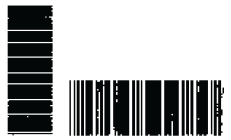 |
|
Slightly Overburned
Slightly overburned labels are not as obvious. The normal Bar Code will be IN SPEC. Small character alphanumerics will be bold and could be slightly filled in. The rotated Bar Code spaces are small when compared to the IN SPEC Code, possibly making the code unreadable.
|
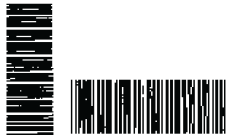 |
|
Slightly Underburned
Slightly underburned labels are, in some cases, preferred to slightly overburned for IN SPEC Bar Codes. Both normal and rotated Bar Codes will be IN SPEC, but small alphanumeric characters may not be complete.
|
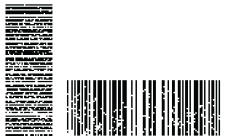 |
|
Underburned
Underburned labels are very obvious. Both normal and rotated Bar Codes have incomplete bars and spaces. Small alphanumeric characters are unreadable.
|
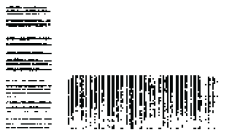 |
|
IN SPEC
The IN SPEC bar code can only be confirmed by a verifier, but it should exhibit some very visible characteristics. The normal Bar Code will have complete, even bars and clear, distinct spaces. In both normal and rotated styles, small alphanumeric characters will look complete.
|
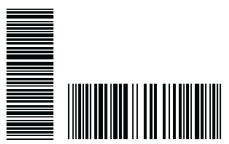 |
ANSI Print Quality Samples
|
Void
The absence of ink in a printing area where ink should appear. A void creates an area of white space that can interfere with the first-read rate of a printed code and, depending on the size and location of the area, may even render the code unreadable.
|
 |
|
Bridging
Often caused by overburning; characterized by spaces in printing being filled in with ink.
|
 |
|
Underdeveloped
Most often caused by underburning; characterized by missing ink transfer throughout the image.
|
 |
|
Ideal Image
Characterized by crisp edges and sharp corners. Easily readable and scannable.
|
 |
Reach out to us or contact your IMP representative today for pricing, free ribbon samples, or just to strategize on ways we can help you expand your ribbon and label sales.








